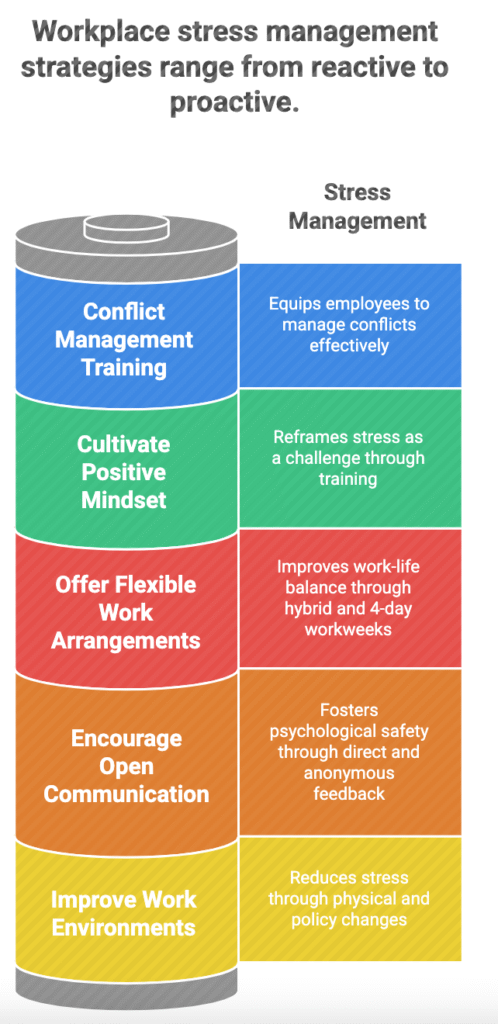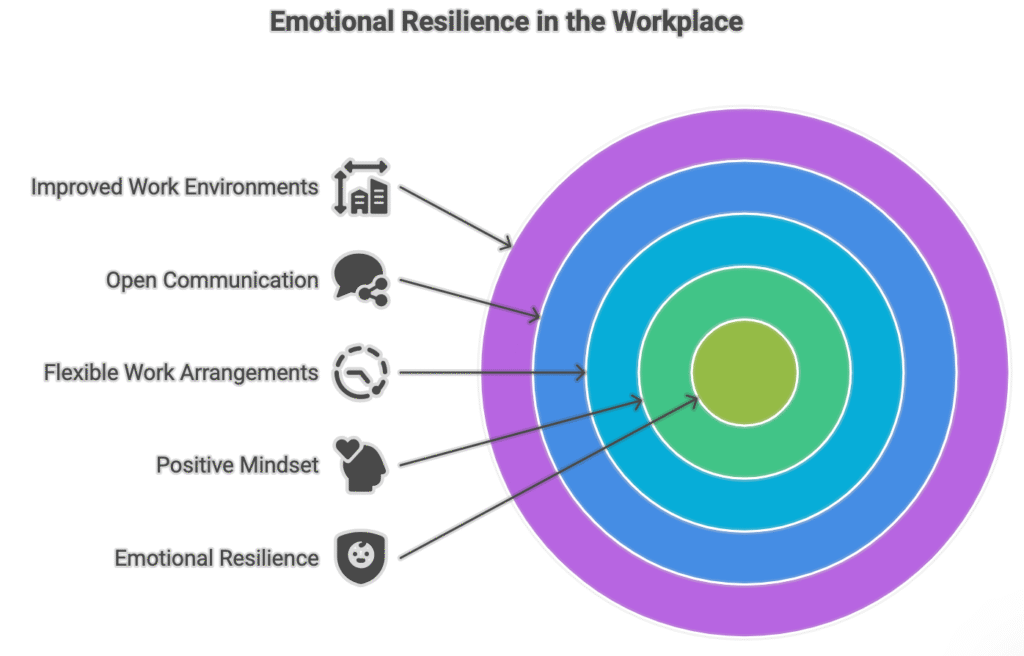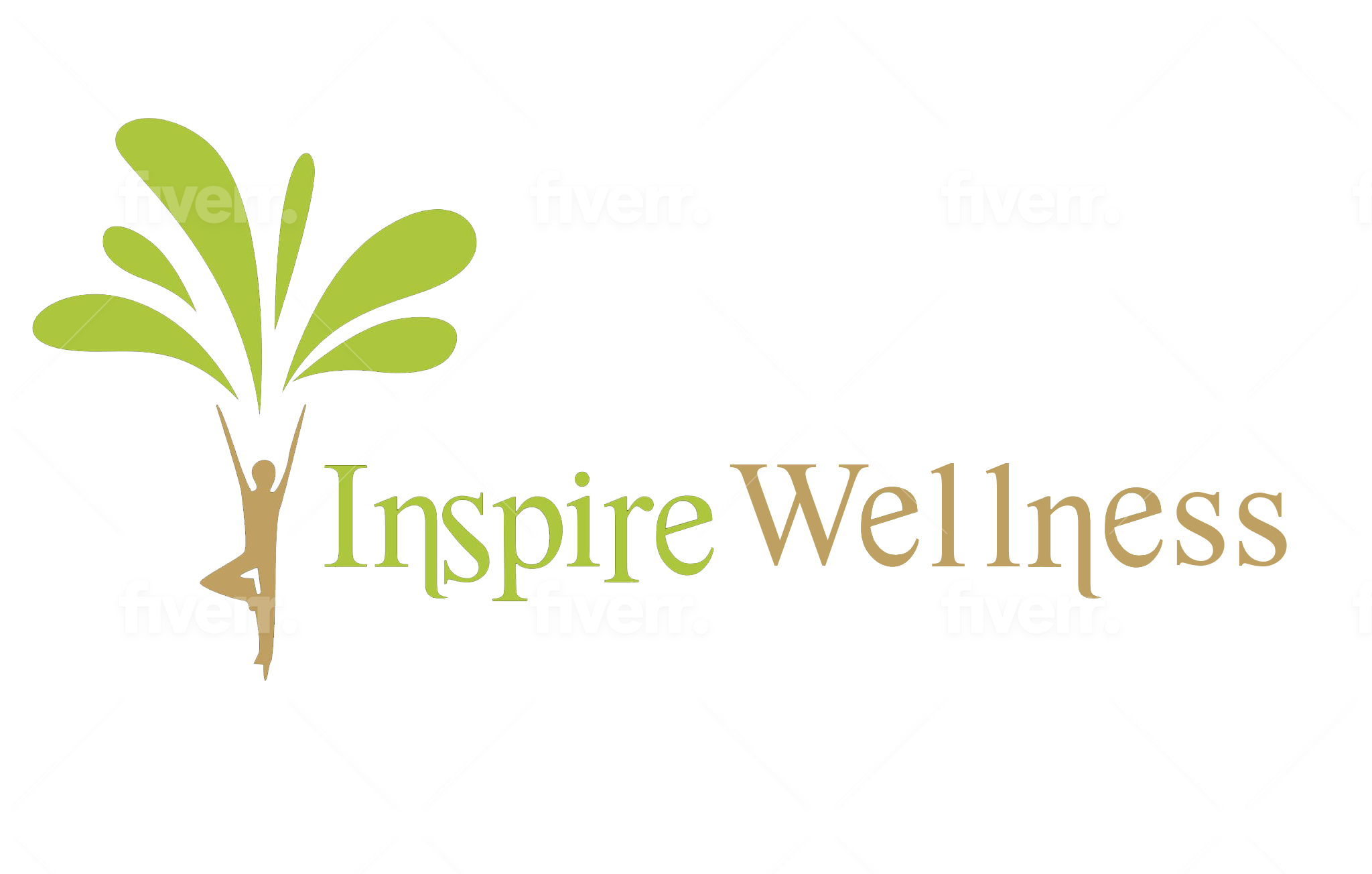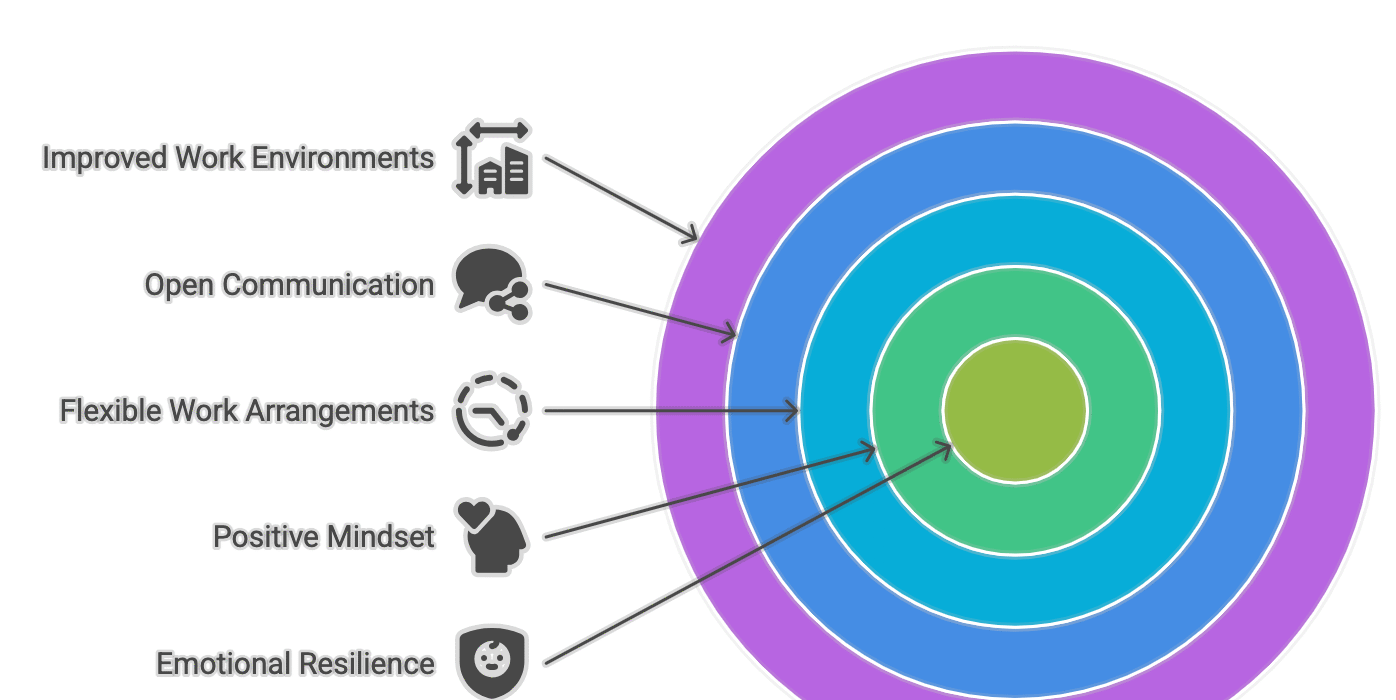We are sharing the Inspire Wellness Guide to enhance emotional resilience at work practical strategies and resources to effectively managing stress within the workplace. It covers improvements to work environments, fostering open communication, offering flexible work arrangements, and cultivating a positive mindset especially geared to cultural nuances within the diverse working environments in the UAE. The aim is to provide actionable steps for leaders and HR professionals to create a healthier, more productive workplace.

1. Improve Work Environments Through Design
A well-designed work environment can significantly reduce stress levels and boost employee well-being. Consider the following physical and policy changes:
Physical Space Changes:
- Biophilic Design: Incorporate natural elements like plants into the workspace. Studies show that plants can boost productivity by up to 15% (Human Spaces Report).
- Natural Light: Maximize access to natural light. Natural light reduces eye strain and headaches, contributing to a more comfortable and productive work environment (Cornell Study).
Policy Changes:
- Meeting-Free Fridays: Implement meeting-free Fridays to allow employees dedicated time for focused work and reduce meeting-related stress. Companies like Asana have adopted this practice to combat burnout.
- “No-Email” Hours: Establish “no-email” hours, such as after 6 PM and on weekends, to encourage employees to disconnect and recharge.
2. Encourage Open Communication (Psychological Safety)
Creating a psychologically safe environment where employees feel comfortable expressing their concerns and vulnerabilities is crucial for managing stress. Google’s Project Aristotle identified psychological safety as the number one trait of high-performing teams.
How to Foster Psychological Safety:
- Weekly 1:1s: Conduct regular one-on-one meetings with employees. Ask direct questions like, “What’s stressing you this week?” to identify and address potential issues.
- Anonymous Surveys: Utilize anonymous surveys to gather feedback on workplace stressors and identify areas for improvement. Tools like Officevibe can be helpful.
- Vulnerability Modeling: Encourage leaders to share their own struggles and challenges. This reduces the stigma associated with stress and encourages employees to seek help when needed.
3. Offer Flexible Work Arrangements
Flexible work arrangements can significantly reduce employee stress and improve work-life balance.
Stats to Convince Stakeholders:
- Hybrid Work: Studies show that hybrid work arrangements lower stress for 72% of employees (Gartner).
- 4-Day Workweeks: Trials of 4-day workweeks have demonstrated that productivity can be maintained or even improved (92% success rate in UK trials).
Implementation Guide:
- Core Hours: Establish core hours (e.g., 10 AM–2 PM) for collaboration and meetings, allowing employees flexibility outside of these times.
- Results-Only Work Environment (ROWE): Focus on evaluating employee output rather than the number of hours worked. This approach empowers employees to manage their time effectively and reduces presenteeism.

Long-Term Cultural Shifts
Guide to decrease office politics, stress and emotional outbreaks at work. Sustained stress management requires long-term cultural shifts within the organisation.
1. Survey Your Team About Stress
Regularly survey your team to gauge stress levels and identify specific stressors. Sometimes it isn’t as easy as asking, getting more detailed information on bio-markers, sleep quality, problem solving and creativity all suppose survival mechanisms which has a knock on effect on critical thinking and motivation levels.
Sample Questions:
- On a scale of 1–10, how manageable is your workload?
- What’s one policy that would reduce your stress?
Tools: Culture Amp, SurveyMonkey
2. Cultivate Positive Mindset (Organizational Cognitive Behavioral Therapy)
Promote a positive mindset and help employees reframe their perception of stress. When mistakes are seen as opportunity to learn it changes the construct of perfectionism, R&D becomes robust as understanding the problem is halfway towards arriving at the solution, taking calculated risks for growth rather being governed by fear. Taking a ‘can-do’ positive mindset allows employees to lean into challenges rather than stay within the comforts of routinisation, this enhances efficiency, creative problem solving and clearer managerial communication that encourages flatter hierarchical structures.
- Reframe “Stress” as “Challenge”: Encourage employees to view stress as a challenge rather than a threat. This can improve performance (Yerkes-Dodson Law).
- Growth Mindset Training: Provide training on developing a growth mindset, which can lower burnout by 41% (Stanford).
3. Conflict Management Training
Equip employees with the skills to effectively manage conflicts, a significant source of stress in the workplace. Our active listening and mindful communication wellness workshops has made a notable impact on communication within teams and along the hierarchical structure.
- Impact of Bad Managers: Studies show that 57% of employees cite bad managers as their top stressor.
- Nonviolent Communication (NVC): Implement Nonviolent Communication (NVC) training to reduce team conflicts by up to 60%.

Bonus Resources: Stress Management Tools for Leaders
To facilitate the implementation of these strategies, consider utilising the following resources, change begins with awareness and examining the data will give you a clearer picture on what is the best starting point for your firm:
- Leader’s Stress Audit Template: Identifies personal and team stress triggers. Includes a daily stress tracker (physical/emotional/behavioral signs), a team stress assessment questionnaire, and an action plan worksheet.
- Manager’s Guide to Burnout Prevention: A step-by-step playbook for teams, covering how to conduct “stress roundtables,” scripts for difficult conversations about workload, and flexible work policy templates.
- Corporate Wellness Program Pitch Deck: A ready-to-present deck for HR/leadership buy-in, including ROI statistics on stress reduction, a sample 90-day wellness rollout plan, and case studies from Google and Microsoft.
Want Personalized Support?
Corporate wellness coaching programs can help leaders, it isn’t easy taking about high stress levels, panic attacks, insomnia or hypertension in a public forum so we work one on one with executives to give them actionable guidelines including:
- Customize stress management frameworks.
- Train managers in burnout prevention.
- Measure program success with engagement analytics.
Final Tip
Set up a free consultation with your leadership team, sustainable change comes top down within the organisation! Companies that prioritise mental health see 5x higher retention (Deloitte, 2023).
“The best leaders don’t just manage stress—they make it obsolete through culture.”
For ongoing tips, follow us on LinkedIn, where from 14 years of experience in the wellness industry Neelam Harjani shares:
- Weekly stress-busting techniques.
- Interviews with wellness-focused CEOs.
- Live Q&As with workplace psychologists.

